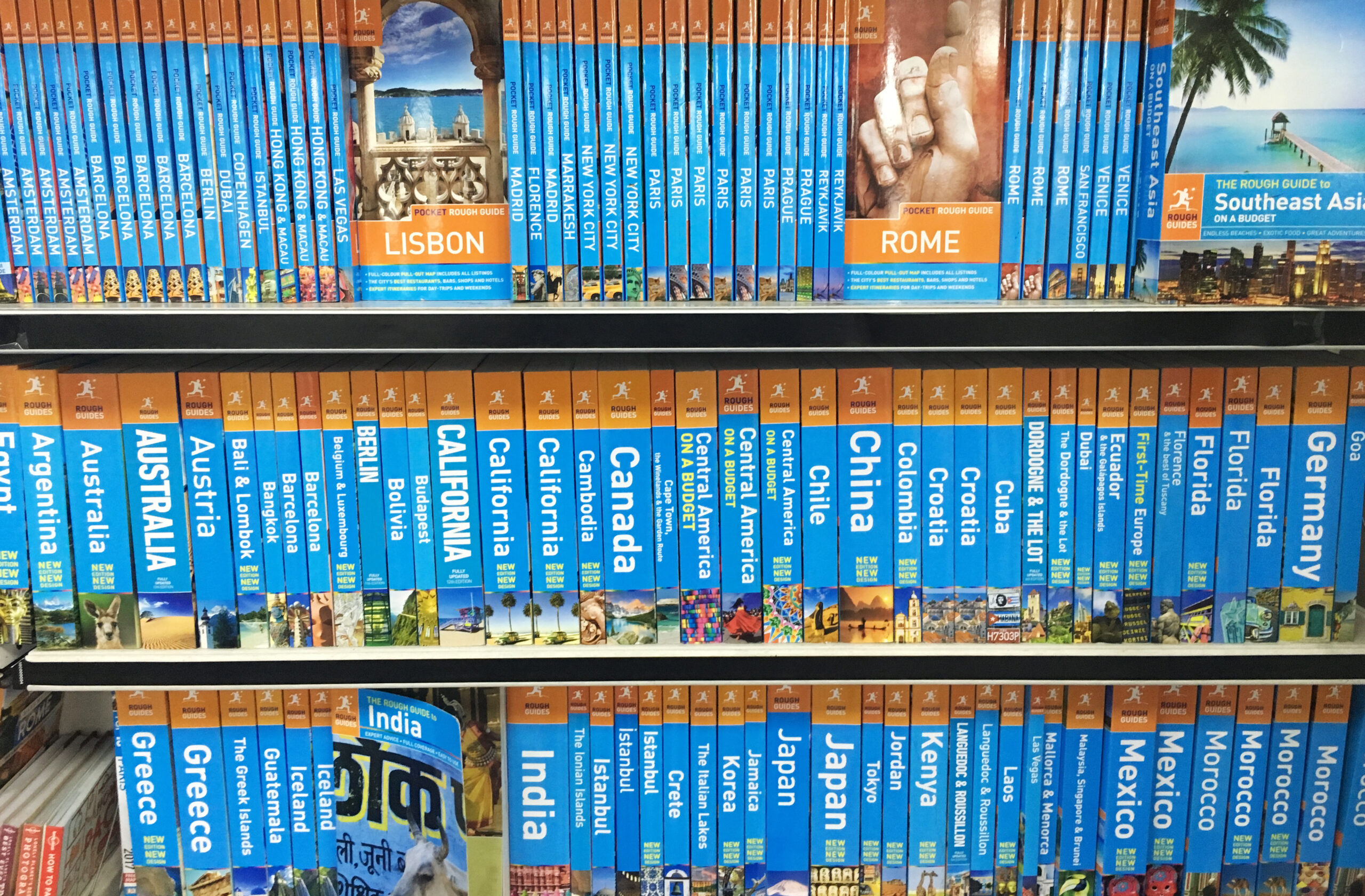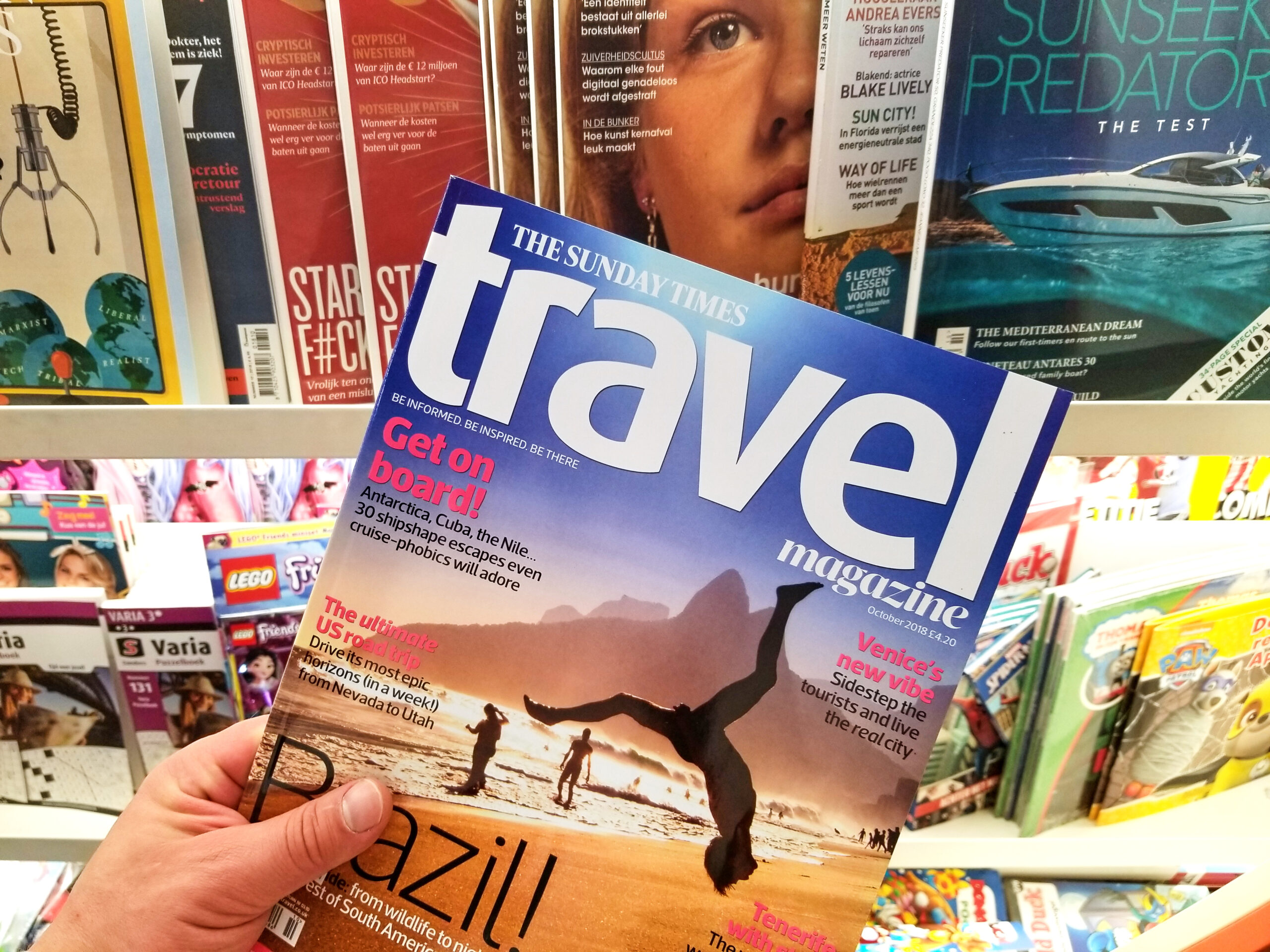With global travel bans and a massive drop-off in advertising to contend with, travel publishing (especially print) is facing its biggest challenge yet. Rose Dykins says digitally-savvy brands with diverse offerings will be the first to bounce back post-pandemic but there will also be casualties.
It’s no secret that the travel publishing industry has been facing an uphill battle prior to Covid-19. Over the past 15 years, its pre-existing business model reliant on advertising revenue, magazine subscriptions and guidebook sales has been turned upside down by the rise of the digital age, the 2008 recession and evolving trends in the way people seek inspiration and guidance when planning their travel.
As has been the case for most industries, for the travel publishing world, the pandemic has amplified problems that were already at play.
Between 2007 and 2012, travel guidebook sales fell by 40 per cent globally as they fought to hold their place in an increasingly crowded market – competing with the likes of review sites, travel blogs, apps and booking websites that offered reams of free, current, digestible information at consumers’ fingertips.
This has since recovered by 27 per cent, as publishers such as Lonely Planet and Rough Guides worked hard to diversify their offering beyond printed guide books, carving out their niche as a source of trusted, in-depth advice from local experts.
But then came Covid-19. Earlier this month, the world’s largest travel publisher, Lonely Planet, announced it was closing its offices in Melbourne and London “almost entirely”, while continuing to publish guidebooks at its Dublin and Tennessee offices with with reduced staff numbers. Rough Guides, which has been publishing travel guidebooks for 40 years, has yet to reveal how it has been impacted by Covid-19, but is offering a free e-book version of one of its guides for a limited time, while Bradt Guides is offering 50 per cent off its e-book guides for now. Now that there’s no guarantee when (or whether) their recommended restaurants, attractions or transport links will reopen post-pandemic, the content of many guidebooks could sadly be rendered redundant.
Rough Guides, which has been publishing travel guidebooks for 40 years, has yet to reveal how it has been impacted by Covid-19, but is offering a free e-book version of one of its guides for a limited time, while Bradt Guides is offering 50 per cent off its e-book guides for now. Now that there’s no guarantee when (or whether) their recommended restaurants, attractions or transport links will reopen post-pandemic, the content of many guidebooks could sadly be rendered redundant.
There will always be a niche need for physical guide books – a godsend when wifi or phone signal is patchy or pricey – and an audience that appreciates them. But in the uncertain, fast-changing travel landscape we find ourselves in, it’s also critical for travellers to have up-to-date advice they can base their decisions on, which calls into question the format of printed guides published before the crisis.
Instead, as certain travel publishers use this period of downtime to introduce new customers to their e-book offering, we will see them focusing their efforts on finessing their digital output – websites, apps, e-books, podcasts and social media content – which can be easily updated and amended to offer real-time information for travellers, rather than disseminating content with a shorter shelf-life from their pre-written guidebooks.

What tomorrow’s travellers need more than ever, is trusted guidance from experts that’s relevant to their individual situation. For some time, publishers have been finding inventive ways to diversify their revenue streams and monetise the valuable expertise they have to offer, and we’ll see even more of this over the coming months and years.
This includes going beyond offering blanket advice in printed form, to providing a more curated offering and in-trip support. In 2018, Rough Guides launched its Bespoke Trip Booking Service, where its local experts plan tailor-made trips for people looking to avoid “soulless, predictable attractions.”
And earlier this year, Lonely Planet partnered with international tour operator Intrepid Travel to launch Lonely Planet Experiences – 300 expert-designed, small group tours of destinations, all of which are carbon-neutral, currently bookable from October 2020 onwards. The collaboration will Intrepid Travel help Lonely Planet branch out its offering, provide on-the-ground guidance and personal recommendations from local experts as and when travellers need it. While travel magazines and travel sections of newspapers normally have the ability to be more agile and reactive with their content than guidebooks, during lockdown, printing and selling them is a logistical nightmare.
While travel magazines and travel sections of newspapers normally have the ability to be more agile and reactive with their content than guidebooks, during lockdown, printing and selling them is a logistical nightmare.
Those that are more reliant on advertising to generate income are hurting right now – there have been reports of advertising rates dropping by as much as 70 per cent – and free publications such as Metro and The Evening Standard printed in large numbers and distributed to commuters have lost their usual readership.
Still, while travellers are at home pining for their next getaway, there’s a real opportunity for travel publications to build their audiences by engaging with customers at the inspiration stage of planning a trip – even if, for many, their power to produce and print physical editions may be limited, for now. For this reason, titles with strong, established digital capabilities will ride out the storm more successfully.
Glossy aspirational travel magazines are temporarily adapting the slant of their content in keeping with lockdown living, honing in on where readers are right now – dreaming about the future, making grand plans for #WhenThisIsAllOver, but also looking for immediate ways to make the most of life right now.
Conde Nast Traveller for example – which is currently offering a year’s worth of print and digital subscription for just £12 – is running articles about “finding joy at home” and has an “Armchair Travel” section, which includes articles on how to experience countries and cultures through books, films, music, and food.
The travel sections of newspapers, meanwhile are publishing aspirational features for those looking ahead, such as The Sunday Times Travel section’s recent round-up of 10 Essential Trips to Book for 2021.
Ink Global, which publishes more than 30 in-flight magazines internationally, may not be printing hard copies for a while, but it’s actively looking for opportunities to support airlines through this period. “We’re doing lots to reach out to our clients if they need support, if they need any copy updated, or video,” said the company’s CEO Simon Leslie, speaking on It’s a Saleslife podcast. “We’re saying to them: ‘Now is the time to think about what editorial you need.’”
Given that it’s easier and cheaper to produce and distribute digital content in lockdown conditions – digital magazines, video and podcasts – it’s this kind of media that will surely take over from print now. Especially as many airlines are banning paper magazines in seat-back pockets and lounges as they harbour germs.
The future of travel publishing is buoyed by a powerful force – people’s desire to see the world. For the time being, the focus of publishers is to maintain strong relationships with their stakeholders, and keep their audiences feeling engaged and inspired, leading them through their travel dreaming stage, building their trust, and preparing helpful, accurate, intuitive content ready to be unleashed as soon as they get the green light to confidently book their next trip.



